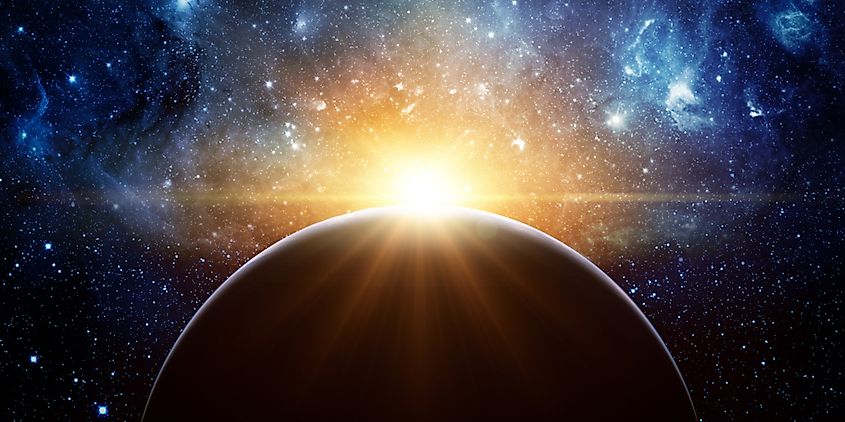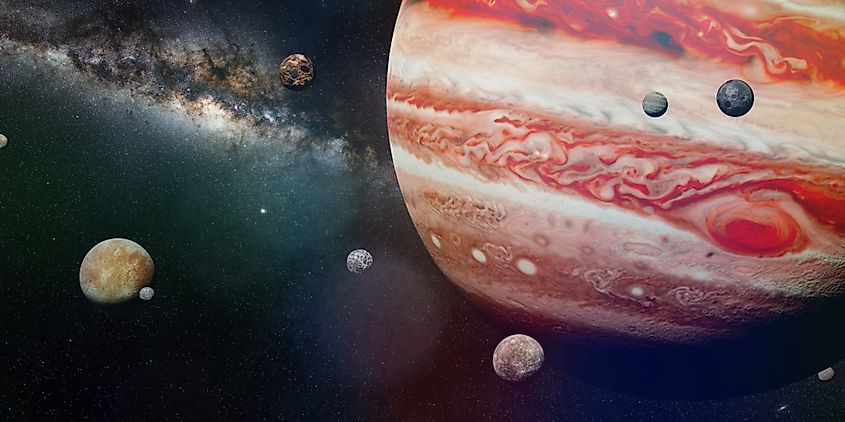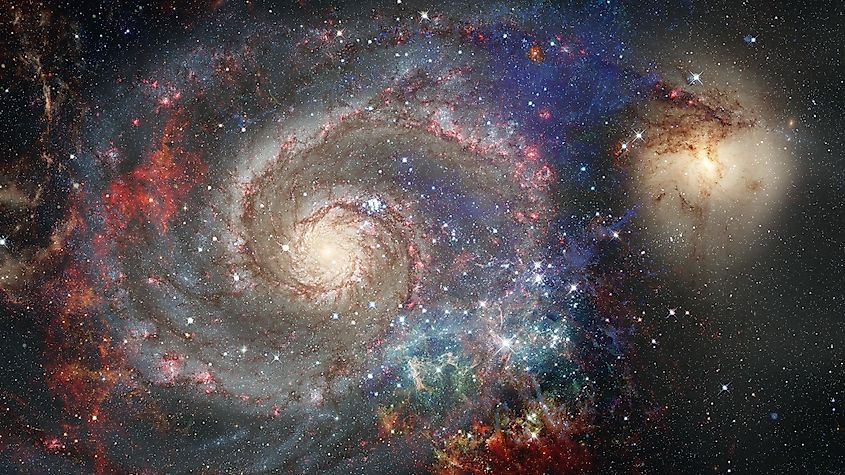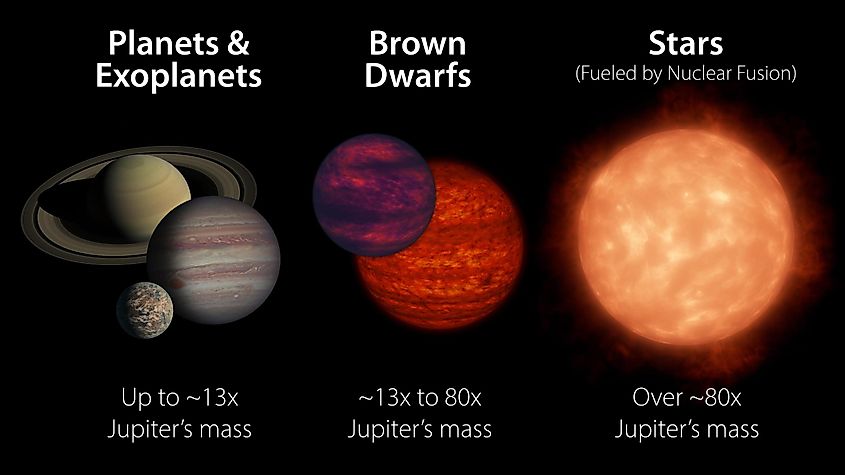Planets and stars are two very different objects. At first glance, there are obvious differences between them. Planets are small and dim, while stars are massive and bright. What makes a planet a planet and a star a star? Do stars begin as planets? Can a planet become a star? What defines a planet and a star?
What Is A Star?

A star is defined as an object, the mass of which is large enough to ignite the process of nuclear fusion. Nuclear fusion is the process by which atoms are fused to form heavier atoms. For stars, pressures and temperatures in their cores are so high that hydrogen atoms fuse to form helium atoms. This process releases so much energy that powers the star. If an object does not gain enough mass to ignite nuclear fusion, it will never become a true star.
What Is A Planet?

A planet is a spherical object that orbits a star and whose mass is significant enough to clear its orbit of debris. Planets can come in different masses. In our solar system, each of the eight planets is vastly different in size and mass. Mercury is the smallest planet at only 0.055 times the mass of Earth. Jupiter is the largest planet, having a mass of 318 Earths. Jupiter may be unbelievably massive, but it is not massive enough to ignite nuclear fusion in its core.
Can A Planet Become A Star?

Every star begins its life in virtually the same way. A large cloud of hydrogen clumps together and collapses under its own gravity. Stars begin their lives as small clumps of gas and dust, and as the gravitational pull increases exponentially, more and more material is drawn in, and the star increases in mass. Eventually, temperatures and pressures reach a critical point once the forming star becomes massive enough, and nuclear fusion is ignited. What was once a clump of hydrogen has become a star.
Interestingly, this process of formation is similar to how planets form. Like the stars they orbit, planets coalesce from clumps of gas and dust. Over time, gravity works its magic, and an entire planet emerges. If a planet’s mass were to keep increasing uncontrollably, it would eventually reach a point where nuclear fusion begins. There is a point in every star’s life during its formation where it was not so different from a planet like Jupiter. Like the Sun, Jupiter is composed mainly of hydrogen and helium. In terms of composition, the Sun and Jupiter are very similar. The only difference between them is that Jupiter never became massive enough for nuclear fusion. If there is enough material for a planet to collect, it has the potential to become huge enough to become a star.
Brown Dwarfs

Once nuclear fusion begins and a star is born, is it possible for that star to lose mass and become a planet? Theoretically, a star would need to lose enough mass that nuclear fusion could no longer occur; hence it would no longer be a star. However, this process is only known to occur in brown dwarfs. Brown dwarfs can be thought of as failed stars. They represent the area between a gas giant planet and a fully formed star. They are not small enough to be a planet, but they are also not large enough to become stars. Instead, they are a state that exists between a planet and a star. By measuring the masses of the smallest and largest brown dwarfs, astronomers can understand how massive a planet would need to be to become a star. The smallest brown dwarfs are roughly 13 times the mass of Jupiter, while the largest is about 85 times the mass of Jupiter. If a brown dwarf happens to orbit a star, the star’s gravity can gradually absorb material from the brown dwarf, decreasing the mass of the brown dwarf over time. Eventually, the brown dwarf will become a gas giant planet.
https://www.worldatlas.com/space/what-is-the-difference-between-a-star-and-a-planet.html
2022-05-01 13:04:47Z
CBMiWGh0dHBzOi8vd3d3LndvcmxkYXRsYXMuY29tL3NwYWNlL3doYXQtaXMtdGhlLWRpZmZlcmVuY2UtYmV0d2Vlbi1hLXN0YXItYW5kLWEtcGxhbmV0Lmh0bWzSAVxodHRwczovL3d3dy53b3JsZGF0bGFzLmNvbS9hbXAvc3BhY2Uvd2hhdC1pcy10aGUtZGlmZmVyZW5jZS1iZXR3ZWVuLWEtc3Rhci1hbmQtYS1wbGFuZXQuaHRtbA
Bagikan Berita Ini














0 Response to "What Is The Difference Between A Star And A Planet? - Worldatlas.com"
Post a Comment